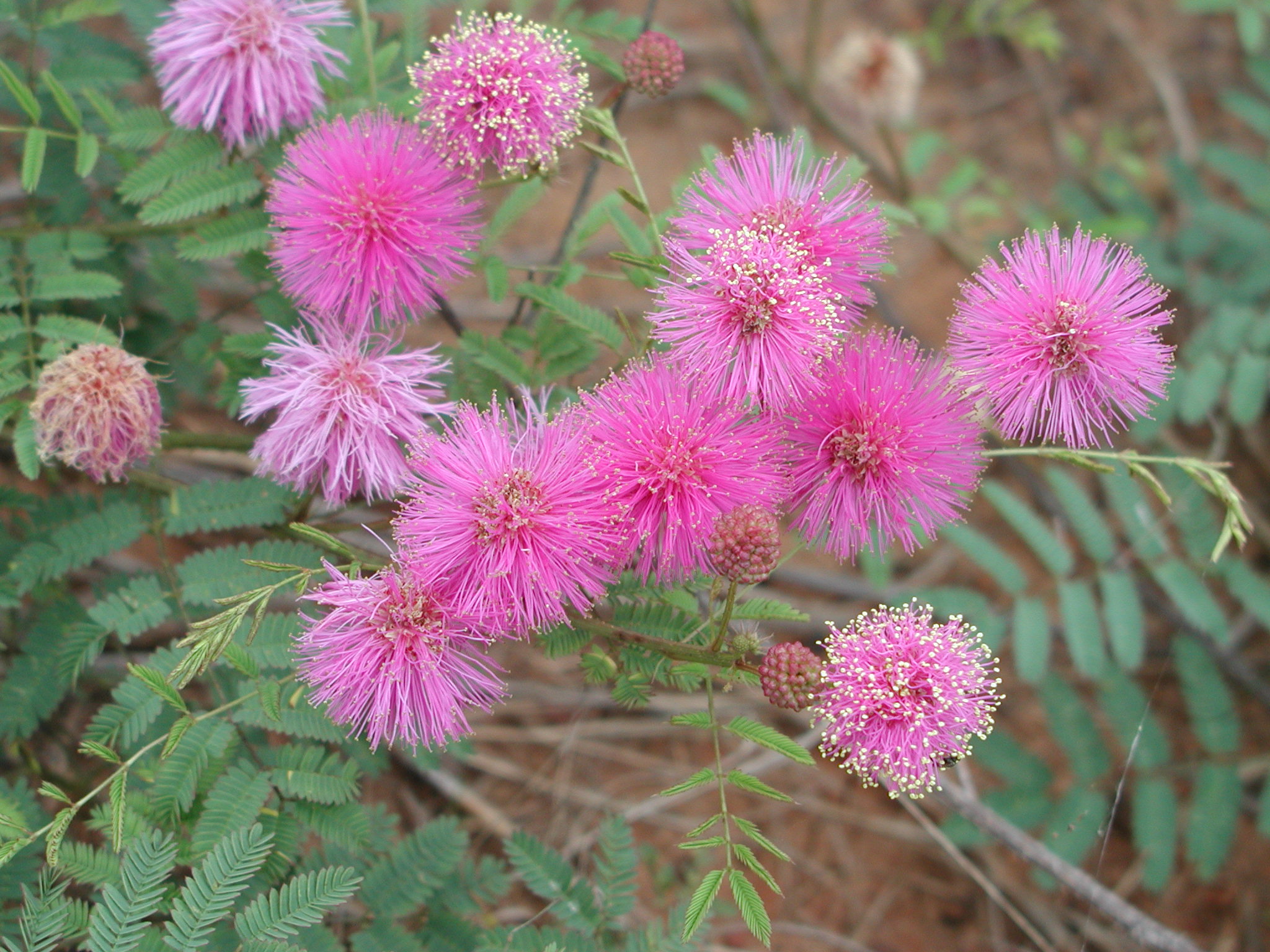Resource Library
Plant of the Week: Plant of the Week: Mimosa nuttallii, Sensitive Briar — Sept. 2, 2016
FAYETTEVILLE, Ark. -- Kids are fascinated by nature, but you are more likely to find larger mobs of them at a zoo than a botanical garden. Animals do cool things but plants, well they just sit there. While this is mostly true nature is full of exceptions. Take sensitive briar (Mimosa nuttallii), a native wildflower that has all manner of tricks up its proverbial sleeve.

Sensitive briar, a member of the legume family, is one of about 20 species of Mimosas described in the central and south-central states, with about 400 known throughout the world. Arkansas has two or three of these species native here with sensitive briar the most common. The mimosa tree (Albizia julibrissin) of our grandparents’ gardens is related but not a true mimosa.
This plant is a long lived herbaceous perennial with a sprawling habit that can grow to 18 inches tall and 3 to 4 feet wide during the year. Basal stems tend to be woody with all branches covered in short, yellow, recurved spines.
It flowers from late spring until fall, producing pinkish powderpuff shaped bloom clusters to an inch across. The mass of stamens hide the true, but tiny flowers beneath. Early in the season or after periods of rainfall in the summer the plants will produce a good display of flowers. The fruit is a flattened, prickly pea pod to about two inches long.
But it is the leaves that attract the most attention. It has doubly compound leaves with an average of about 80 to 130 narrow, quarter inch long leaflets. If bumped, leaflets opposite each other on the rachis (leaf stem) quickly fold together. Pinch the terminal pair of leaflets and the leaflets will fold together sequentially down the rachis. If the entire leaf is given a good bump, the leaf will fold downward. The leaves undergo this change at night, folding up and going to sleep as it gets dark.
When mimosa leaves move, they move rapidly. This phenomenon, called thigmonasty, has been studied extensively in the Central American relative, sensitive plant (M. pudica), which has long been grown as a houseplant curiosity. The part of the leaf that causes the movement is called the pulvinus, a cluster of gatekeeper cells at the base of each leaflet and the leaf itself.
The pulvinus is composed of two types of cells, a flexible strand of cells that functions like a hinge and a group of cells above and below the hinge that can gain or lose water rapidly. The response begins when leaves are disturbed – by touch, heat, wind or feeding of an insect. An electrical signal is flashed to the pulvinus and the cells on the underside of the hinge deflate while the upper ones engorge with water. This is done by the rapid loss of potassium and chlorine ions from the lower cells and a rapid uptake of calcium ions in the upper cells.
Sensitive briar is found throughout the state in sunny sites along roadways and areas with shallow, poor, often somewhat sandy soils. Because it can fix its own nitrogen, it is considered a soil builder. It is not in the nursery trade but would be worth growing in the garden just for the novelty effect. Hours of entertainment could be derived by planting this plant at the top of a raised wall and then tormenting it every time you or a four-year-old walks by.
Pursuant to 7 CFR § 15.3, the University of Arkansas System Division of Agriculture offers all its Extension and Research programs and services (including employment) without regard to race, color, sex, national origin, religion, age, disability, marital or veteran status, genetic information, sexual preference, pregnancy or any other legally protected status, and is an equal opportunity institution.
Extension News - Sept. 2, 2016